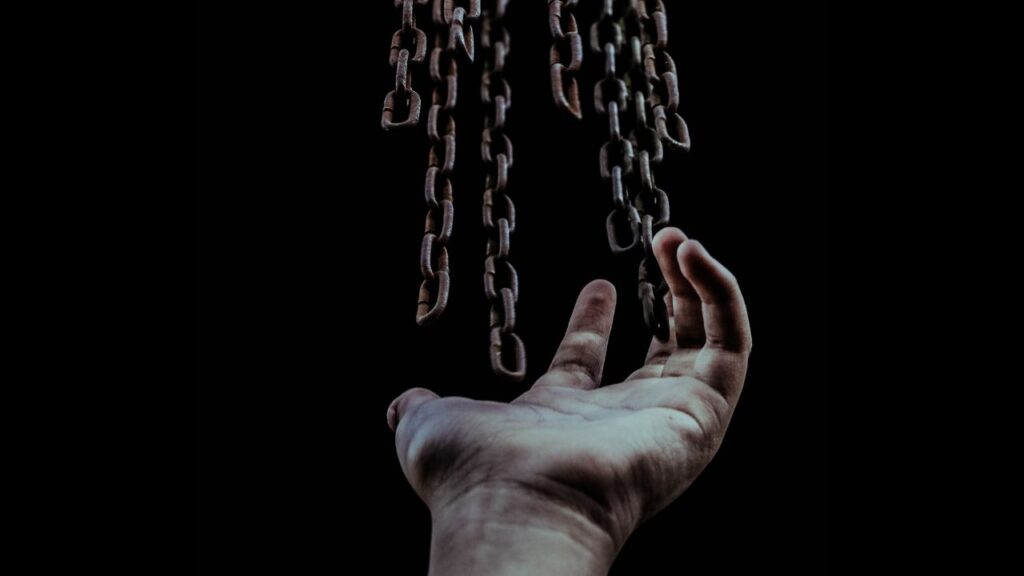“The cross places God in the midst of crucified people, in the midst of people who are hung, shot, burned, and tortured.” ~James Cone, ‘The Cross and the Lynching Tree’
How important is the cause of Jesus’ death for our celebration of Easter this weekend? Those familiar with the Easter story may find the question of the utmost importance. They may even explain the cause along the lines that “Jesus died for our sins.” But it is much more complicated than that.
Theologians through the ages have grappled with this central question of the Christian faith. The Apostle Paul argued that Jesus’ death led to reconciliation between divinity and humanity, while Origen of Alexandria, a third-century scholar, believed that Jesus was a ransom payment for Satan. The most common theory we might be familiar with today was articulated by Anselm, a twelfth-century theologian and philosopher. Anselm’s view of Jesus was that of substitutionary atonement, where God is depicted akin to a feudal lord whose honour had been offended by the sins of humanity. Christ then acts as a stand-in for humanity, suffering crucifixion for human sin and satisfying God’s just wrath against humankind’s transgression due to Christ’s blamelessness.
In their interpretations, these theologians are less concerned with the finer details of the historical circumstances that led Jesus to Calvary, as reported by the gospel writers. This is not to say that they are not interested in history, because the death of Jesus is a material fact that grounds its subsequent spiritual and allegorical interpretations.
The gospel writers more directly describe accounts of concrete reasons why Jesus received a death sentence; why and how a Judean peasant is sentenced to lethal punishment by a Roman procurator. They present narratives of arrest, trials, sentencing, and execution in order to articulate the causes of Jesus’ death – and to underscore that he was innocent, unfairly tried, quickly sentenced, and disproportionately punished.
Jesus’ death is not the consequence of well-distributed justice. Instead, it is the lynching of a man who through rhetoric, coercion, and popular opinion was criminalised. Although the gospel accounts differ in many regards, one place in which they are consistent is that portray Jesus as innocent. Jesus is depicted in the gospel accounts as one who has not done anything that deserves death; however, the people determine his guiltiness independently of both his actions and the charges levied against him. The charges actually function rhetorically to portray Jesus as a criminal.
Luke’s gospel is particularly useful for seeing how Jesus is criminalised. Luke is clear in illustrating how Pilate finds no reason to charge Jesus; however, the accusations of the Jerusalem temple leadership inspire the people to seek Jesus’ crucifixion. The people deem Jesus guilty without any evidence.
I see parallels with contemporary discourses that employ similar rhetoric and criminalise certain groups in today’s society. Khalil G. Muhammad, in his seminal work The Condemnation of Blackness: Race, Crime, and the Making of Urban America describes how criminal rhetoric and racial logic in America have gone hand in hand, to the point where statistics were manipulated to “prove” that African Americans were more prone to crime than their white counterparts. Muhammad’s work underscores the fact that criminality is not about committing crimes, but it is about systems of power. These systems create and perpetuate discourses that present people marked by status, class, gender, and race, as prone to and even guilty of crime prior to gathering evidence.
The same kind of rhetoric is at work in the gospel accounts of the crucifixion. The text in Luke 23:1-25 suggest that the accusations against Jesus, and his subsequent sentencing to death, mark how Jesus is classed as a criminal and how he is thus punished, although the allegations are unfounded or at least deemed by Pilate to be inconsequential and certainly not worthy of death.
In the accounts, Jesus is accused of three offences.
Charge 1: Stirring up our people
In the gospel of Luke, the Jerusalem temple leadership – comprising the priests and teachers of the law – present Jesus as an outsider “stirring up our people”. He is not outside of Jewishness or Judean identities, but he is from the outside of the axis of power in Jerusalem. In their ‘charge sheet’ the temple leaders emphasise that Jesus began teaching in Galilee, another part of Judea on the other side of Samaria. He began spreading his message amongst peasants, fishermen, and farmers in rural Galilee and had now brought his message all the way to the metropolis of Jerusalem. This implies that they consider Jesus either an outside agitator for Jews in Jerusalem, or an insider disrupting technologies of the temple leadership’s power from within.
The gospels all agree that Jesus was teaching in the temple publically during the busiest festival of the Jewish calendar. There would have been extra Roman police surveillance, which the presence of Pilate in the city epitomises. Therefore, Jesus’s broadcasting of “outsider” ideas would be dangerous, especially if those ideas appeared antagonistic to the power of the temple leadership or to Rome. The temple leaders’ arguments here could sound like a “Make Judea Great Again” campaign that needed scapegoats to legitimise the power of the elite and to quell any challenges to their power.
This charge of stirring up the people that the temple leadership raised against Jesus to Pilate does not explain how he stirred up the people and what he stirred them up for, but the connection of this charge to insurrection could depict Jesus as a threat that needed to be neutralised. Hence, when Jesus asks at his arrest, “Why do you come out with swords and clubs as if I were a bandit (insurrectionist)?” he identifies that he is being criminalised as the type of troublemaker that the ancient imaginaire would anticipate to receive crucifixion for seditious activity.
Charge 2: Forbidding people to pay taxes
The Jerusalem temple leadership accused Jesus of forbidding people to pay taxes to Caesar. This at best is an overstatement, because the people did not actually pay taxes directly to Caesar. In Roman-controlled Judea, peasants were not only employed to work on land that they could never own, they were also taxed. This taxation went to the ruling aristocracy (for whom they worked) who in turn paid taxes to Rome and were thus considered a part of the extended Roman imperial family. The taxation, tax collectors, and tax recipients were hated by the underclass.
The relationship between the peasant class and the ruling priestly class explains why the temple leadership, and particularly the priests, would see this charge against Jesus as particularly insidious. The priests, appointed by the Roman procurator, were given a measure of autonomy to run Jerusalem on behalf of the Romans. They were in effect the brokers of the fiduciary relationship between Rome and Judea – like homeguards or paramount chiefs in the African colonial context – and this arrangement during this time was particularly successful for the ruling elite. Pilate had an uncharacteristically stable relationship with the Jerusalem priests and did not have to exchange the high priests as frequently as his predecessor or successor. This relative stability was desirable in Judea in particular, an area that was prone to turbulence and tense relationships with the Romans. Forbidding people to pay taxes would jeopardise this proximate tranquility, which impacted the priests’ economic and political position as well as the people’s safety from Roman aggression.
Charge 3: Claiming to be a Messiah king
The last charge that the Jerusalem temple leadership raise against Jesus is that he says that he is a Messiah king. This charge is important, because it is the only one that Pilate asks Jesus about. This charge most clearly demonstrates the appeal to portray Jesus as an insurrectionist. Both messiah and king are politically loaded terms in the Roman imperial context, and for one to claim either was often linked with being an insurrectionist. The majority of the times this term is used it is in reference to a criminal involved in seditious activity.
Messianism was rampant in first century Judea. The historian Josephus acknowledges a number of figures that considered themselves to be messiahs, who felt they were anointed to bring back the Kingdom of David, or to reestablish Judean independence as had been the Hasmonean period. The activism of many of these messiahs earned them the death penalty on the cross. Even the book of Acts notes how some figures “claimed to be somebody” and had led many people in ineffective movements.
Pilate does not ask about the messiah part of the charge, instead he focuses, as he should, on the charge about Jesus claiming kingship. This charge is both laughable and serious. It is laughable that a Galilean peasant’s claim to regal authority would be taken seriously and given due process by a Roman procurator. It is a serious charge though, because this charge would claim that Jesus is pitting the “basileia tou Iēsou/Theou”- kingdom of Jesus/God against the “basileia tēs Roma” – the Roman Empire. If that was the case, then regardless of status the individual would be guilty of treason and that was a crime punishable by death, even for citizens. With this charge, the Jerusalem temple leadership is seeking the highest penalty that they can for Jesus by portraying him as the most abominable of criminals.
The Sentencing
The gospel of Luke never presents any Roman or Jewish official as deeming Jesus worthy of death until the moment that Jerusalem temple leadership and people exclaim, “Crucify him!” This even shocks Pilate, because he had not found him guilty of any of the charges. But the rhetoric of the elders, priests, and scholars had prevailed, because when Jesus returns from being interrogated by Herod, the gospel writer Luke adds that Pilate addresses not only the Jerusalem temple leadership but the people as well. They unanimously ask for Barabbas’ freedom and Jesus’ crucifixion.
In the account, Barabbas is an insurrectionist who has committed murder and the people prefer him over Jesus. This suggests that the crowd views Jesus as more of threat or more hated than a murderer. This disdain for Jesus from Luke’s narrative is unwarranted and unfounded. However, Jesus is categorically placed beside an insurrectionist and is determined guilty by the people. It is not clear what he is guilty of but it is safe to assume that the people presume that he is more deserving of punishment than one who committed murder and insurrection.
The same rhetorical technique is used when we contrast Jesus with the two criminals who are also crucified that day. One of the criminals suggests that these two have done something worthy of such a heinous death. Although such a speech is unlikely, it rhetorically serves the purpose of illustrating the type of criminal that Jesus is portrayed as. This exposes the vicious nature of criminality, because it legitimates and justifies lethal state power.
Jesus is classed with people who are considered to deserve such a despicable form of punishment. He shares their criminality, because the judiciary process landed them all with the same sentence. Another way to read this portion of the narrative is that if the criminals’ guiltiness is brought about by the same means by which Jesus is criminalised, Jesus’ crucifixion with them could potentially allude to the criminals also being innocent, despite their execution.
This is not justice.
Pilate would have certainly been concerned about suppressing any attempt to supplant Roman power. However, his non-guilty verdict, and its multiple attestations of this across the gospels, is noteworthy. Pilate says that he did not find Jesus guilty of anything worthy of a death sentence, which is not the same as saying that he did not find him guilty of anything. And Pilate’s suggestion to have Jesus flogged exposes how Jesus’ body is marked and understood.
Flogging was reserved for the lowest status of person. It means that Pilate’s suggestion is still humiliation, and recognition that Jesus’ status suggests that he is guilty of some crime even if there is no evidence, and even if the charges brought forth are unfounded. After engaging with the judicial system at this level, Jesus could not go free without being taught a lesson. That is why the word for flog here is so interesting, because it can also mean “to teach.” Pilate’s mercy punishment is framed as diminutive and educative. It serves to remind Jesus and others who were like him of their status in regards to Rome. Nonetheless, Pilate does not get to follow that course of action and is instead prompted by the crowd to sentence Jesus to die on a cross.
Although Pilate issues the sentence, it is the people who make the judgment. The mass of people described in the text is not an unreasoning horde of people, but is part lynch mob and part democratic assembly. They judge what prisoner is let free, even though Pilate does not offer to let one go. They judge that Jesus should be crucified, even though Pilate suggests a milder punishment. By the time the people speak in the narrative, it is clear that the facts of the case are irrelevant and that the people have made a decision. The Jerusalem temple leadership’s role, then, was not to convince Pilate that Jesus deserved death, but it was to convince the people at the praetorium in the presence of Pilate. This is not without historical precedence that public opinion influenced Roman officials’ distribution of justice, especially if the stability of city depended on the people’s response to a verdict. In effect, Jesus is sentenced to death by a state-sanctioned lynch mob.
In the end, I am not convinced that Jesus deserved to die. I see him as caught up in a system that veils its logic of criminality by justifying imprisonment, torture, and execution as legal necessities for the good of society. But this does not critically reflect on how people who may receive the punishments of criminals may not necessarily be lawbreakers or crime committers. If one is classed as a criminal, then one’s body is perpetually in danger of arrest and punishment.
Criminality, therefore, is not about crime. Some scholars suggest that the Roman government would not have been concerned with a Judean peasant unless he had posed some type of serious threat, but that logic assumes that imperial governments are always guided by logic, compassion, and justice.
We can look at our own contemporary (in)justice systems and recognise that that is not always, and for some people it is never, the case. Most justification for criminal rhetoric tends to side with those in power, with the voices that benefit from criminalising lower classes. Then, their criminal status is used as the basis for their continued legal and social oppression.
So, re-reading narratives like the passion accounts of Jesus in light of that observation allows us to be suspicious of how criminals, even today, are constructed by the powerful to maintain oppressors’ authority and distinct identity.
But the passion accounts don’t end there. They end with the resurrection, where the God of Jesus does not allow people falsely imprisoned and criminalised to remain there. This God follows his people through prisons built by criminalised logic and even beyond the grave, guiding them to liberation and resurrection. The divine sharing of criminality exposes unjust systems that prosecute innocent people everyday, who are forced to plead guilty or are prematurely declared guilty.
And if I could just preach for a moment, I would quote Cone again when he says, “The real scandal of the gospel is this: humanity’s salvation is revealed in the cross of the condemned criminal Jesus, and humanity’s salvation is available only through our solidarity with the crucified people in our midst.” This recognition illustrates how the strange fruit of the prison industrial system is linked to the strange fruit hung on southern U.S. trees, which must be linked to the strange fruit Romans hung on the cross at Golgotha. May we strive to not find ourselves like the Roman centurion at the foot of the cross who declares too late, “Surely this was an innocent person.”








